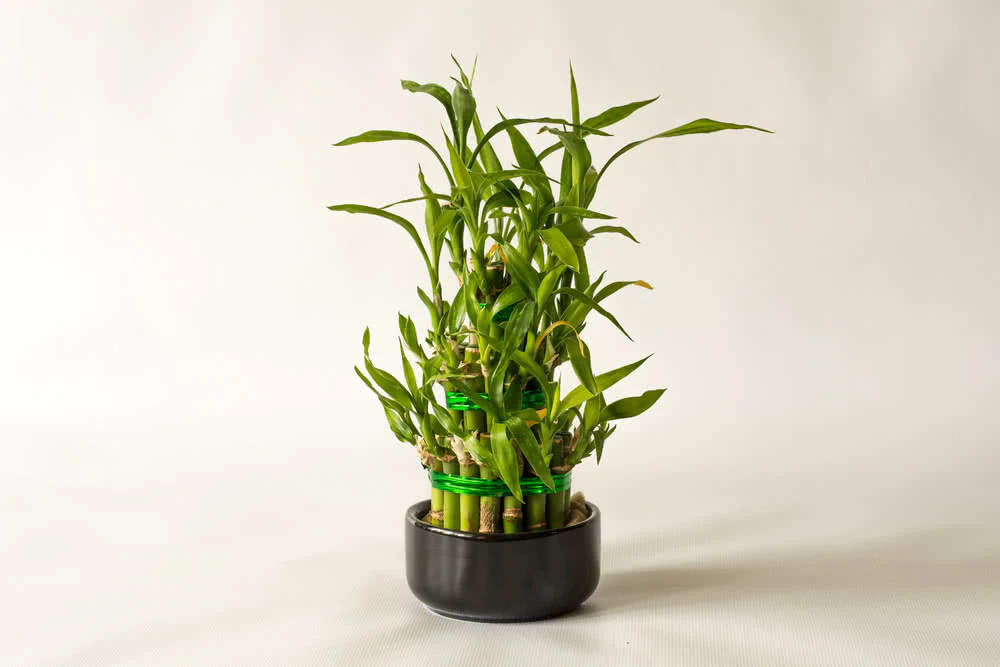Indoor bamboo gardens offer a unique way to introduce a touch of nature and tranquility into your living space. In this article, we will explore the various benefits and features of indoor bamboo gardens, as well as tips on how to create and maintain one. So, let’s dive in and learn about the beauty and serenity that indoor bamboo gardens can bring to your home.
Contents
Benefits of Indoor Bamboo Gardens
Indoor bamboo gardens offer a range of benefits, making them a fantastic addition to any home. Here are some of the top advantages:
- Air Purification: Bamboo plants are known for their air-purifying abilities, helping to remove harmful toxins from the air and improving the overall air quality in your living space. This can be particularly beneficial for those suffering from allergies or respiratory issues.
- Low Maintenance: Bamboo plants are relatively low maintenance, making them an ideal choice for busy individuals who want to enjoy the benefits of indoor gardening without having to invest a significant amount of time and effort.
- Aesthetics: Bamboo plants offer a unique and attractive visual element to any indoor space. Their elegant, slender appearance can create a sense of tranquility and harmony, making your home more inviting and relaxing.
- Space-saving: As bamboo plants can be grown in containers, they are perfect for those with limited space. An indoor bamboo garden can be easily created in a small corner of your living room, bedroom, or even your office.
- Feng Shui: In Feng Shui, bamboo is considered a symbol of good luck, prosperity, and positive energy. Incorporating a bamboo garden into your home can bring positive vibes and promote a sense of well-being.
How to Create an Indoor Bamboo Garden
Creating an indoor bamboo garden can be simple and enjoyable. Here are some steps to help you get started:
Choose the Right Bamboo Species
When selecting bamboo plants for your indoor garden, it’s important to choose species that are suitable for indoor cultivation. Some popular choices include:
- Lucky Bamboo (Dracaena sanderiana)
- Moso Bamboo (Phyllostachys edulis)
- Golden Bamboo (Phyllostachys aurea)
Select the Right Containers
Choosing the right containers for your indoor bamboo garden is crucial for the health and growth of your plants. Here are some factors to consider when selecting containers:
- Size: Select a container that is large enough to accommodate the mature size of your bamboo plant. As a general rule, the diameter of the container should be at least twice the diameter of the bamboo’s root ball. This will provide enough space for the plant to grow and prevent it from becoming root-bound.
- Material: Bamboo plants can be grown in containers made from various materials, such as ceramic, plastic, or metal. Each material has its advantages and drawbacks. For example, ceramic pots are heavier and provide better stability for tall bamboo plants, while plastic pots are lightweight and easier to move. Metal pots can be stylish and durable, but they may heat up in direct sunlight, potentially harming your plant’s roots.
- Drainage: Ensure your chosen container has drainage holes to prevent waterlogging and root rot. If your pot doesn’t have drainage holes, you can drill some yourself or place a layer of pebbles or broken pottery at the bottom of the container to create space for excess water to drain away from the roots.
- Aesthetics: Choose a container that complements the style of your home and enhances the beauty of your bamboo plant. You can select from a wide range of colors, shapes, and designs to suit your personal taste and décor.
When you’ve selected the right container for your indoor bamboo garden, fill it with a well-draining soil mixture to provide your plant with the proper nutrients and growing conditions.
Plant Your Bamboo
Plant your bamboo at the same depth as it was in its original container. Water the plant thoroughly, allowing the water to drain out of the bottom of the container.
Position Your Indoor Bamboo Garden
Place your indoor bamboo garden in a location that receives bright, indirect light. Bamboo plants generally prefer temperatures between 18-24°C (65-75°F) and humidity levels around 40-60%. You can increase humidity around your bamboo plants by placing a tray of water near them or using a humidifier.
Caring for Your Indoor Bamboo Garden
Proper care is essential to maintain a healthy and thriving indoor bamboo garden. Here are some tips to help you care for your plants:
- Watering: Keep the soil consistently moist, but not soggy. Overwatering can lead to root rot, while underwatering can cause the leaves to turn yellow and drop. Check the soil regularly and water as needed.
- Fertilizing: Feed your bamboo plants with a balanced liquid fertilizer once a month during the growing season (spring and summer). Follow the package instructions for the correct dosage.
- Pruning: Prune your bamboo plants to maintain their shape and size. Remove any dead, yellowing, or damaged leaves and stems as needed.
- Pest Control: Keep an eye out for pests such as spider mites, scale insects, and mealybugs. If you notice any infestations, treat the affected plants with an insecticidal soap or neem oil.
Enhancing Your Indoor Bamboo Garden with Design and Décor
To create a truly captivating indoor bamboo garden, consider incorporating elements of design and décor. These ideas will help you elevate your space and make it truly unique:
Incorporate a Zen Theme
A Zen-inspired design can enhance the tranquility of your indoor bamboo garden. Consider incorporating elements such as:
- Rock gardens: Create a small rock garden using pebbles, gravel, or larger stones to represent water or islands. Arrange the rocks in a way that promotes a sense of balance and harmony.
- Moss: Add patches of moss to your rock garden or around the base of your bamboo plants for a touch of greenery.
- Sand: Use sand to create a “dry landscape” or Zen garden, raking it into patterns that mimic the flow of water.
- Water features: Install a small tabletop fountain to introduce the soothing sound of running water into your indoor bamboo garden.
Use Lighting to Create Ambiance
Thoughtful lighting can dramatically enhance the atmosphere of your indoor bamboo garden. Consider these options:
- LED grow lights: LED grow lights not only provide your bamboo plants with the light they need to thrive but can also add a warm, inviting glow to your space.
- String lights: Drape LED string lights around your bamboo plants or along the edges of your containers to create a magical, twinkling effect.
- Candles: Arrange candles or flameless LED candles throughout your indoor bamboo garden to introduce a warm, cozy ambiance.
Add Decorative Elements
Incorporate decorative elements that complement your indoor bamboo garden and reflect your personal style. Some ideas include:
- Bamboo accessories: Add bamboo-themed wall art, sculptures, or vases to reinforce the theme and create a cohesive look.
- Plant stands: Elevate your bamboo plants with attractive plant stands to create a multi-tiered display and showcase your garden from various angles.
- Mirrors: Place a mirror behind your indoor bamboo garden to reflect light and create the illusion of a larger space.
Introduce additional plants to your indoor bamboo garden to create a lush, vibrant space. Here are some plant species that complement bamboo and thrive in similar conditions:
- Ferns: Ferns, such as Boston ferns or maidenhair ferns, provide a delicate, feathery contrast to the tall, slender bamboo stalks.
- Orchids: Elegant orchids add a touch of color and exotic beauty to your indoor bamboo garden.
- Palms: Small indoor palms, like the parlor palm or pygmy date palm, enhance the tropical ambiance of your indoor bamboo garden.
Frequently Asked Questions About Indoor Bamboo Gardens
Here are some commonly asked questions about indoor bamboo gardens and their answers:
Can I grow bamboo from cuttings?
Yes, you can propagate bamboo plants by taking cuttings from an existing plant. To do this, cut a healthy, well-developed culm (stem) from the parent plant, ensuring that it has at least two nodes (the swollen areas on the stem where leaves and branches grow). Place the cutting in a container filled with water, making sure that one node is submerged. Change the water every few days to prevent stagnation. In a few weeks, roots should start to develop from the submerged node. Once the roots are established, transplant the cutting into a pot filled with well-draining soil.
How often should I repot my bamboo plants?
Indoor bamboo plants should be repotted every two to three years to provide them with fresh, nutrient-rich soil and to accommodate their growing root systems. Choose a container that is slightly larger than the current one, and be sure it has drainage holes. Gently remove the bamboo plant from its current pot, taking care not to damage the roots. Trim any dead or damaged roots, and then transplant the bamboo into the new container filled with a well-draining soil mixture.
Are indoor bamboo plants toxic to pets?
Some bamboo species can be toxic to pets, particularly dogs and cats, if ingested. The most commonly grown indoor bamboo, Lucky Bamboo (Dracaena sanderiana), is not a true bamboo and is toxic to pets. If you have pets, it’s essential to choose a non-toxic bamboo species for your indoor garden, such as Phyllostachys aurea or Bambusa multiplex. Always consult the ASPCA’s Toxic and Non-Toxic Plant List before introducing any new plants into your home.
How do I control the size of my indoor bamboo plants?
To maintain a manageable size for your indoor bamboo plants, regular pruning is essential. Here are some tips to help you control their size:
- Prune the culms: Trim the culms to your desired height using a sharp pair of pruning shears. Cut the culms at a 45-degree angle just above a node to encourage new growth.
- Thin out the plant: Remove any overcrowded, old, or damaged culms to allow for better air circulation and light penetration. This will also encourage new, healthy growth.
- Trim the roots: When repotting your bamboo, trim back the roots to help control the overall size of the plant. Be cautious not to damage the healthy roots and trim no more than one-third of the root mass.
Can I grow different bamboo species together in the same container?
Yes, it is possible to grow different bamboo species together in the same container, provided that they have similar growth habits, light requirements, and water needs. When planting multiple bamboo species in the same container, consider these factors:
- Size compatibility: Choose bamboo species with similar mature sizes to prevent one species from overshadowing or outcompeting the others.
- Growth rate: Select bamboo species with similar growth rates to ensure that they coexist harmoniously in the same container.
- Soil preferences: Make sure the bamboo species you choose have similar soil preferences, such as moisture levels and acidity, to create a compatible growing environment.
Conclusion
An indoor bamboo garden offers numerous benefits, including improved air quality, natural beauty, and a sense of tranquility. With proper care and attention, your indoor bamboo garden will flourish, providing a serene and inviting living space. Enhance your indoor garden with complementary plants, thoughtful design, and décor elements to create a truly captivating and unique environment.

